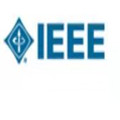In pathology, tissue samples are assessed using multiple staining techniques to enhance contrast in unique histologic features. In this paper, we introduce a multimodal CNN-GNN based graph fusion approach that leverages complementary information from multiple non-registered histopathology images to predict pathologic scores. We demonstrate this approach in nonalcoholic steatohepatitis (NASH) by predicting CRN fibrosis stage and NAFLD Activity Score (NAS). Primary assessment of NASH typically requires liver biopsy evaluation on two histological stains: Trichrome (TC) and hematoxylin and eosin (H&E). Our multimodal approach learns to extract complementary information from TC and H&E graphs corresponding to each stain while simultaneously learning an optimal policy to combine this information. We report up to 20% improvement in predicting fibrosis stage and NAS component grades over single-stain modeling approaches, measured by computing linearly weighted Cohen's kappa between machine-derived vs. pathologist consensus scores. Broadly, this paper demonstrates the value of leveraging diverse pathology images for improved ML-powered histologic assessment.
翻译:在病理学方面,对组织样本进行评估时使用了多种污点技术,以提高独特的历史特征的对比度。在本文中,我们采用了一个基于CNN-GNN的多式CNN-GN的图形聚合法,利用多处未登记的病理学图象的辅助信息来预测病理计分。我们在非酒精性骨质肝炎(NASH)中展示了这种方法,预测CRN纤维化阶段和NAFLD活动分数(NAS),对NASH进行初级评估通常要求对两种病理性污点进行肝脏生物学评估:Trichrome(TC)和 hematoxylin 和 eosin(H&E)。我们的多式方法学习了从与每种污点相对应的CT和H&E图中提取补充信息,同时学习了一项最佳政策来综合这一信息。我们报告在预测纤维化阶段和NAS组成部分等级方面比单层模型方法(NAS)改进了20%。我们通过对机器-源测的和病理学家共识分进行线性加权的计算来衡量。广而言,本文展示了利用不同病理学图象学图象图图图图图图图图图评估的价值。





